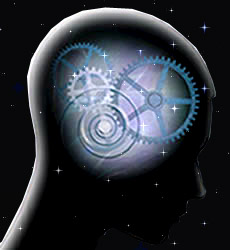
Astrology for NLP
 The
very strength of NLP is also its chief weakness. It doesn't have a lot of
theory. It is a collection of techniques which are incredibly fast and
therapeutically effective with profound results gained in a pain-free and simple
way. It is a very practical approach to what actually works in the real world,
rather than the academic theoretical approach that tries to explain how it
should work according to ideas which are usually nominalizations. If the
academics had discovered NLP, we would still be stuck in a bunch of academic
blah blah without any substance at all.
The
very strength of NLP is also its chief weakness. It doesn't have a lot of
theory. It is a collection of techniques which are incredibly fast and
therapeutically effective with profound results gained in a pain-free and simple
way. It is a very practical approach to what actually works in the real world,
rather than the academic theoretical approach that tries to explain how it
should work according to ideas which are usually nominalizations. If the
academics had discovered NLP, we would still be stuck in a bunch of academic
blah blah without any substance at all.
What NLP does not have is a map of the parts. NLP talks about the parts as if they were just a useful imaginary construct. This is not true. They are real. You can call them parts/planets/centers/chakras/multiple personalities/traits or whatever, but these energies are real and they exist. Astrology is the map of the parts. It tells you who they are, how they operate, where they operate, who they operate with, and when they operate for how long.
Astrology operates like a
schematic or flow chart that shows you where the parts are and how they are
connected to each other. It gives you the big picture. Without the map, you are
working in the dark and you are going to make mistakes. Let us say a person
comes to you saying they are depressed and they want to be happy? What are you
going to do? Some of you are going to try to help them to be happy, right? Yeah,
use a little reframing and submodality crossmapping and up they go. If that
person is a Saturn/Moon, you just fell into the therapist' trap of accepting a
red herring. Instead of shooting for the mythical goal of happiness, it would be
truer to the person's nature to help them shift to seriousness. A Saturn/Moon
is a Saturn/Moon and happiness is contrary to its nature and a violation of the
true self. It will never, never happen. Depression is the downside of doing the
Saturn/Moon part the wrong way.Seriousness is the upside of doing the
Saturn/Moon part in a way in which it is fulfilled.
Using the Map of Parts will
enormously help your strategy as a therapist. You will see the big picture. You
will see if a problem is long-term (state) or short-term (trait). If the problem
is temporary, you will see how long it will last, what its positive intention
is, and which other parts are supporting or sabotaging. You will be able to see
in just seconds the overall direction of the person's life and their chief
purpose and destination. You will be able to see which problems are just the
price to pay to be true to the self (acceptance, positive intention, and
reframe), which ones are the result of conditioning and expectation (unnecessary
suffering reaching for the not-self), and which ones are part of a duality
(visual squash).